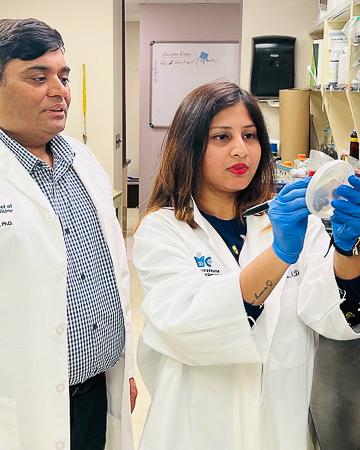Researchers from the Department of Ophthalmology, Visual, and Anatomical Sciences at the Wayne State University School of Medicine have identified three non-antibiotic drugs that can protect the eye from severe inflammation during bacterial infection. The drugs can also be used as adjunct therapy with standard antibiotics to minimize infection outcomes.

Ashok Kumar, Ph.D., at left, and Susmita Das, Ph.D. Credit: Wayne State University.
The study was led by Ashok Kumar, Ph.D., a principal investigator at Kresge Eye Institute. His laboratory has been involved in investigating host-pathogen interactions and new treatment options in bacterial, viral and fungal eye infection models for several years.
“One of the ways to identify new drugs for any disease includes drug repurposing, where we can identify additional uses for already-approved drugs, enabling the quickest and cheapest possible transition from bench to bedside,” Dr. Kumar said.
Susmita Das, Ph.D., a postdoctoral fellow in Dr. Kumar’s laboratory, is the lead author on “Transcriptomics and systems biology identify non-antibiotic drugs for the treatment of ocular bacterial infection,” published in iScience, a Cell Press journal.